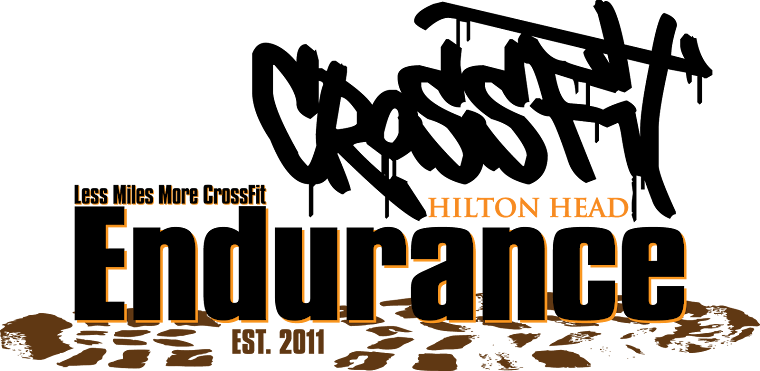I've never personally been affected or had a family member diagnosed with cancer, but about 7 months ago one of our star athletes Shannon front desk extraordinaire came down with a rare form of cancer called synovial sarcoma: cancer of the soft tissue. It's a rare type that was found in her right leg. Thankfully after two knee surgeries the cancer growth had been completely removed. It only had to be about 3months after her surgeries that she was able to come back full force CrossFitting like a pro again.Quite impressive.
I think things like this can sometimes get lost in the shuffle. I mean how was she able to bounce back so quickly? Pure luck? I'm one of those people that believes the universe always balances itself out. If you treat people how you would want to be treated and work hard everything will work out. Not only does Shannon have an incredibly positive personality, but she was psychologically prepared to take on this challenge. Speaking with Shannon in depth about this she quoted "I couldn't have done it without my experience of pushing thru things in the box and the incredible community supporting me." In the early spring, our owners Dayna and Head Coach Craig launched a fundraising cook out at the Boardroom (local bar in Hilton Head) and the entire community came out. We can't fail to mention they both worked the bar that evening utilizing their many years of solid experience. It wasn't surprising the support and I say not surprising because I've been apart of CFHH for a long time now and that's the best part of this place. The strength in the community and people we have who walk thru our doors every day. It was enough strength to help Shannon pay all her hefty medical bills.
CrossFit Hilton Head makes you...
#1 Grateful - grateful for the community, people and supportive environment
#2 Confident - confident enough mentally that you can run your first 5K, achieve a body weight snatch, that first marathon or even beat cancer
#3 Most importantly Humble - humble for the fact that there will always be another challenge and if you work at it and want it you can get there. The last piece is when you get there you don't feel obligated to tell anyone, but yourself..
My experience with illness is limited, but what I do know is that those who have the most successful recoveries seem to be strongly associated with major mental, emotional or physical behavior changes. Some people get better by radical lifestyle changes and others by calling on their optimism and belief. You can't control an experience like cancer or a life threatening disease. All you can do is control the factors above and I strongly believe that CrossFit will make any person more prepared.
Check out thoughts from Melanie B, guest blogging today as she wrote a great article on the benefits of fitness during and after a diagnosis of any kind of cancer...
Cancer Patients Should Reap the Benefits of Fitness
Doctors
are beginning to emphasize the importance of physical fitness in the recovery
and quality of life of cancer patients. This growing trend is due to a number
of studies that have
found regular exercise to help improve appetite, mood levels, and energy
levels in cancer patients.
While
cancer patients may be reluctant to improve their physical fitness when they
are still sick, the benefits are becoming increasingly clear. Some hospitals
have even developed programs that can be tailored to fit the needs of the
individual patient, depending upon their current level of physical fitness and
where they are in their cancer treatment. Even patients with cancers like lung
cancer and mesothelioma have seen
results with tailored workout routines.
Sleep quality
Getting more fit can help you sleep better at night. Some of the medications or treatments you may be on could be negatively impacting your sleep quality. Regular exercise can help you sleep longer, deeper, and more continuously at night. This can help your recovery, since your body needs restful sleep in order to heal properly.
Energy levels
One
of the the most common side effects of cancer treatment is fatigue. Studies are
not showing that exercise can actually increase energy levels and therefore
help combat fatigue in cancer patients.
It
is important, however, to make sure that you do not overdo it. You want to
engage in moderate, regular exercise and listen carefully to your body as you
proceed. Any signs of pain or soreness call for a period of rest to allow your
body to adjust. Some muscle soreness is to be expected, particularly if you have
led a sedentary lifestyle until now.
It
is imperative to speak with a doctor before beginning your workout regimen.
They will be able to create an appropriate routine, which will be beneficial
for your current condition and diagnosis. They will also be able to recommend
many different forms of low impact exercise that you may enjoy, two examples
being swimming and yoga.
Swimming
Swimming is a great type of aerobic exercise, particularly for older patients. The strain on your muscles and tendons is not as great as certain other forms of exercise, as the water will support your weight. Low impact exercises make it less likely that you will be injured or aggravate any existing joint pain caused from treatment.
Yoga
Yoga is increasingly employed in hospital settings to increase flexibility, endurance, mood, and energy level for patients. If your hospital does not offer yoga, you can usually find yoga classes being offered in your local community. Be sure to disclose your physical condition beforehand, so that an appropriate type of yoga will be recommended for your special needs.
No
matter what form of exercise you begin with, it is important to take the step to
get active. Every little bit can help and go a long way throughout your
journey.











